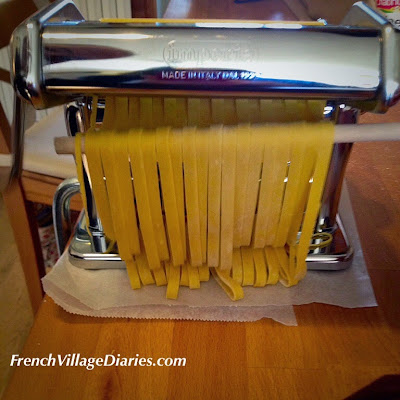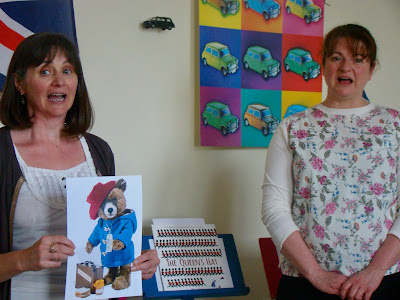Welcome to ‘France et Moi’ where this
week, as part of the online excitement to coincide with the release of her new
novel The Burning Chambers, I am talking to author Kate Mosse about what
France means to her. I will be reviewing The Burning Chambers here on release day, next Thursday.
 |
| Kate Mosse photo Ruth Crafer |
Kate Mosse is an international No 1
bestselling author of non fiction, plays and six novels, including The
Languedoc Trilogy which has sold eight million copies in 37 languages. The
Founder Director of the Women’s Prize and Deputy Chair of the National Theatre,
she divides her time between Chichester in West Sussex and Carcassonne, Aude.
1. I think France is a special place
and it is famed for many things including its cheese, wine and diverse holiday
locations plus, dare I say it, strikes and dog poo littered streets. What do
you think makes France so very unique and ‘French’?
Kate: The smell of
fresh bread, croissants & pains au chocolat being baked, fresh every
morning; the elegance of the pace of life; the markets in each town &
village square filled with flowers, local olives, fruit, vegetables – from huge
bunches of garlic to bright red radishes; the woven wicker shopping baskets –
paniers – used by women and men of all ages; the vanilla scent of Gauloises;
the shared spaces (from old men playing boules to women greeting one another
with a kiss in the local shop). Oh, and carrottes râpées from Casino!
2. What is your first memory of a trip
to France?
Kate: Although we
had family camping trips to Brittany in the summer, it’s a winter school
orchestra trip to Northern France in the early 1970s that sticks vividly in my
mind. A rattling coach from the ferry,
the windows steamed up, driving on the ‘wrong’ side of the road, a glimpse of
the Eiffel Tower and the Arc de Triomphe as we came into Paris. A refectory-style
meal with mushroom vol-au-vents, baskets of baguette put automatically on the
table, cheese that wasn’t cheddar and strong, hard-hitting coffee. It’s a cliché, but it was difference in both
the food and the attitude to it that made France so special. A night in a terrible hostel, with strange
long bolsters instead of pillows, then on to Chartres and a first sight of that
incredible cathedral, a ship of stone rising up out of the countryside and, of
course, the labyrinth!
3. With plenty of space and lovely
scenery, France is a great place to explore. If you were to take a day off from
writing, where would you go to get away?
Kate: Although I
enjoy returning to Chartres & spend a fair bit of time in Paris, my heart
belongs to the south west. My husband & I bought a tiny house in the shadow
of the walls of the medieval Cite of Carcassonne in 1989 and I fell
head-over-heels with the imposing beauty of the towers & turrets, the
glimpses of the white wall of the Pyrenees in the distance from the Pont Vieux,
the huge Midi skies. Taking a break from
my desk, I still like nothing more than to climb up the steps (some 90 of
them!) into the Citadel itself for a cup of coffee or glass of blanquette in
Place Marcou. For a proper day off,
though, I’d head to the magnificent, brilliantly seductive city of
Toulouse. La ville rose is elegant,
bustling, with astonishing architecture and fantastic restaurants, especially
in the quartier Daurade. A picnic of
bread and cheese on the banks of the Garonne, washed down with a little chilled
local rose, watching the sun go down over the quartier Saint-Cyprien on the
other side of the water is hard to beat.
4. You are taking us back to Languedoc
in your new novel – The Burning Chambers. What is it about the history of this
area that inspires your writing?
 |
| The Burning Chambers, Kate Mosse |
Kate: The Burning
Chambers – the first in a sequence of historical novels set against the
backdrop of the French Wars of Religion and telling the interconnected stories
of two families and a feud spanning three hundred years of history – is set in
Carcassonne, Toulouse and the small village of Puivert in the foothills of the
Pyrenees. In Languedoc, there’s a
perfect combination of history and spirit of place – the garrigue and the
vines, the endless Midi skies, the rivers, woods and the mountains, the
extremes of blazing heat & fearsome cold in the winter. There’s also the way that layers of recorded
history – Roman, Visigoth, Crusader and now, of course, the Civil Wars in the
16th and 17th century – are all still visible today. With The Burning Chambers, it was a question
of listening to the echoes of the past, then imagining the women and men who
might have lived in Carcassonne and Toulouse in 1562 on the outbreak of
the wars that were to rip France in two, and wondering what they might have
felt. Research and many visits to
museums, libraries and monuments followed, until little by little, the novel
started to take shape.
5. France has some beautiful cities and
there are a few that constantly battle to be my favourite. Which is your
favourite French city, and why?
Kate: Carcassonne! Of course. Though, I love Toulouse and Paris,
also I’ve had many wonderful visits to Limoges and Orleans. It’s always about the history!
6. Imagine you are sitting outside a
French café at 10am on a sunny morning watching the world go by. What do you order from the waiter?
Kate: Un café alongé
… a double espresso, with a dollop of hot water, croissant rather than pain au
chocolat. If I’m sitting at Bar Félix in
Place Carnot in the Bastide Saint-Louis (the main town as opposed to the
medieval Cite of Carcassonne) and I stay there long enough, a salad of chèvre
chaud au miel. I’ll be listening to the bells of the many churches and the
cathedral as time goes by ….
7. What is your favourite thing to buy
in a boulangerie/patisserie?
Kate: I don’t have a
sweet tooth, but I adore bread. So, for
taking home, the couronne – a sour crusty round loaf which goes perfectly with
any salad, soup or cheese. If I’m
out-and-about, then a sandwich emmental beurre.
8. France has many different cheeses, but which French cheese are you?
Kate: Without doubt,
tomme des Pyrenées. With its waxy black
rind and creamy insides (like a milder, softer gruyère), it’s my favourite
cheese (and hard to get in England …)
9. Every region in France has its own
culinary speciality. Do you have a
favourite regional dish?
Kate: I’m
vegetarian, so I can’t eat the most popular local Languedocien dish of
cassoulet – goose fat, sausage, duck, beans – but I do make sure that all our
guests try it at least once. For myself, I love a local goat’s cheese with
beautiful honey from a nearby farm, the perfect combination of sweet and sour.
10. Can you describe your perfect
French apéro for us, including the drinks, the nibbles, the location and the
company?
Kate: On the terrace
of our little house in Carcassonne below the Cite walls as the sun goes down,
the backdrop of the grey stone walls of the Chateau Comtal, the green gardens
& apple trees of the neighbours’ allotments, the Tour Pinte stretching up
into the pink dusk sky. My husband and
our grown-up children will be there, and perhaps a few close friends. We’ll drink rosé from a large jug with plenty
of ice, or possibly a blanquette de Limoux, black and green olives bought from
the market in the Bastide and maïs grillé (roasted & salted sweet corn)
rather than nuts.
About The Burning Chambers
The Burning Chambers is the first in a
sequence of historical novels set against the backdrop of the French Wars of
Religion in the 16th and 17th centuries.
A Romeo & Juliet story, it tells the story of a Catholic girl,
Minou, her Huguenot lover, Piet, and a feud between two families stretching
over three hundred years. Betrayal and
intrigue, a missing will and a stolen relic, it is a diaspora story and the
action ranges from Languedoc and Paris in the 16th century, to London and
Amsterdam in the 17th and 18th centuries, and finally to the New World and the
Cape in the 19th. The series begins and
ends in the small town of Franschhoek in 1862, where several Huguenot families
had fled persecution to begin a new life, discover that old sins have long
shadows. I’m having a wonderful time
researching and writing the novels, so I hope readers will take Minou and Piet
to their hearts.
Thank you for taking the time to give
some lovely answers to my questions about France and you. Once I’d started The
Burning Chambers, I couldn’t put it down and I just know your readers are going
to love it as much as The Languedoc Trilogy. I become quite attached to Minou
and Piet, was often on the edge of my seat as the action took hold, and can’t wait for their family
journey to unfold through the centuries.
The Burning Chambers will be released
on 3rd May in hardback, audiobook and ebook format and links to Amazon can be
found below. Join me back here next Thursday when I will be sharing my review.
You can visit Kate's website here.
You might also like to read about the day I met Kate in person at the Charroux Lit Fest 2015 here.
















